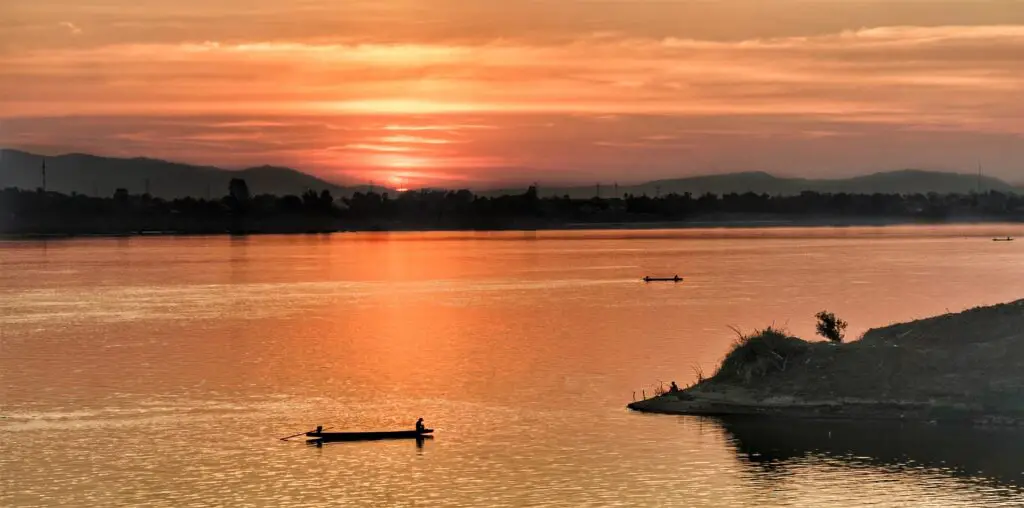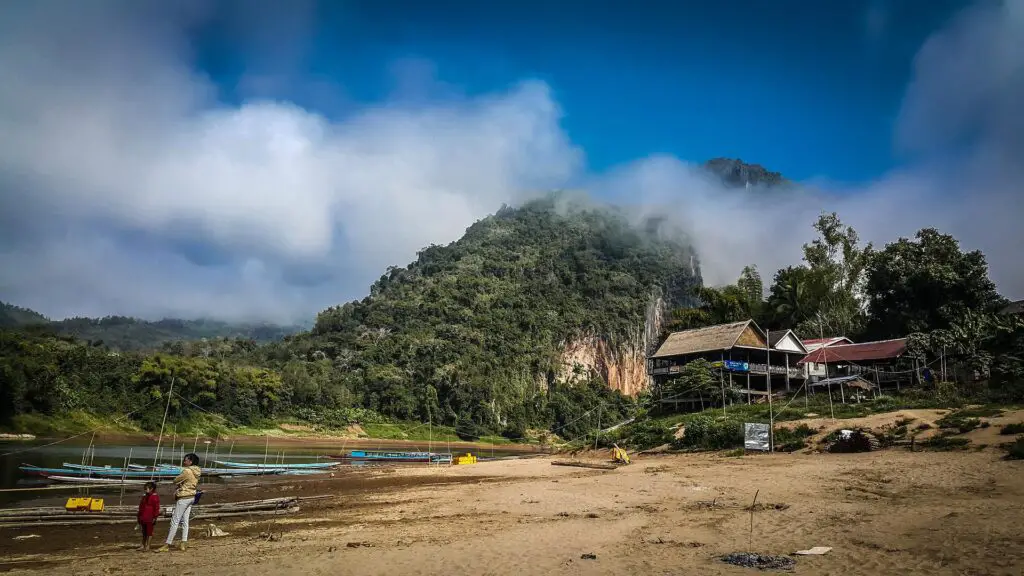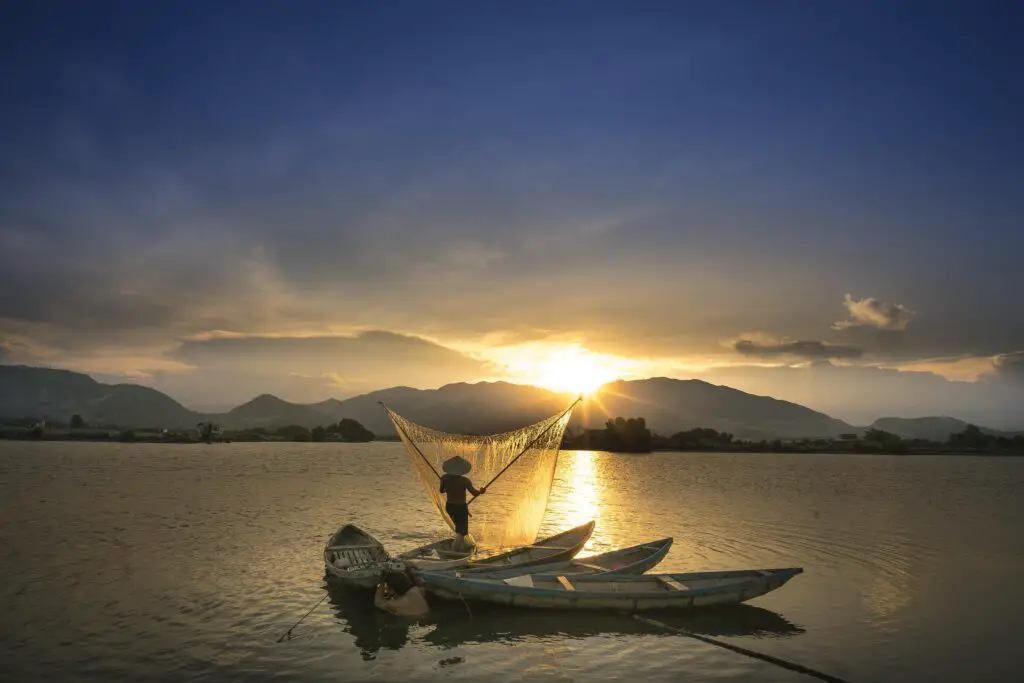The Mekong River is integral to South-East Asia’s irrigation system. Changes along the Mekong and in the Mekong River Delta region have put the livelihoods of millions of people at risk. Climate change and dams are the primary reason that make it more vulnerable to severe droughts.
Changing the Mekong River course may have been disastrous for SE Asia if it wasn’t for Niwat Roykaew. Known around his northern border community as Teacher Tee he was awarded a Goldman Environmental Prize for his role in convincing Thailand to cancel a devastating project.

As a result, many countries in South-East Asia faced trouble with food security, access to drinking water supplies, etc. Debates highlight the extent of the damage that climate change has on the entire region.
Moreover, the question regarding the construction of large dams and the impact on drought is also a subject of various studies.
Let’s go over factors that affect the Mekong region.
Geopolitical Issues
Geopolitical issues affect the Mekong region. While the El Niño effect was the main reason for the dry conditions in the region, the construction of new dams also brought about droughts and food shortages.
Peter Moyle, a biology professor emeritus at the University of California, says the dams in the upper areas of Mekong are a crucial factor leading to the degradation of the entire ecosystem in the region.
He further said,
“I have no doubt that this present drought is the result of the shift in world weather patterns as the result of global change, especially warming trends, and it would not be surprising if it lasted several more years.”
Peter Moyle
He explained how dams could create hurdles in fish migration and result in reservoirs that facilitate a small number of the fisheries that the flowing water would support. Consequently, dams make the effects of the drought more severe.
China operates more than 11 dams throughout the primary stem of the Mekong River. It has come under heavy criticism for the construction and the operation of the dams because it didn’t focus on flowing the water downstream. Moreover, China is not a part of the Mekong River Commission, a body which was set up to discuss the issues with the lower Mekong River basin.
China cut back on its water releases by almost 50% from the Jinghong Dam, citing “grid maintenance” as the major reason. Experts believe it is the reason for the Mekong River’s historic low water levels in the region. Furthermore, China’s promise to release more water raised concerns over its control of the river flow in the Mekong.
Tonle Sap Lake
The Tonle Sap Lake in Cambodia is the most significant body of fresh water. A Mekong tributary that reverses its courses twice a year and feeds the lake with nutrients, fish, and water. Usually, the first reversal occurs during May when the Mekong receives the first rain.
As the river swells, it forces the water down the Tonle Sap Lake with migrating fish. By November, the Tonle Sap Lake has enough volume to push the water back in the opposite direction into the Mekong River. This lake can expand to six times its original size when it rains.
The flood pulse brings fish to the various tribes in that region. It brings more than 500,000 tons of fish into the lake, which is the primary source of protein for the people residing in that region. However, as the flood pulse slows down, there aren’t many fish coming into the lake, which affects the food supply for millions of people.
The effect of damming on reversal in the Tonle Sap River occurred many months later than its usual time frame and didn’t last more than six weeks. After damming it may not reverse a course. Even if it did, the construction of dams and climate change have left the river level so low as to make the reversal negligible.
A report by the Mekong River Commission released in 2020 shows a significant drop in water levels. During the monsoon season, the lake’s volume only reached a quarter of its usual capacity. In fact, the lake’s volume was nearly half by comparison, when the Mekong decreased to a historic low, resulting in food shortages throughout the area.
Battery of Asia
Many climate change activists and experts expressed grave concern over Laos’ ambitions to turn the country into a “battery of South-East Asia.” The country aimed to build more than a dozen hydroelectric dams throughout the Mekong and its tributaries.
While the country wanted to increase its electricity generation capabilities, many worried about the environmental impact in the long run. The country conducted various trials on its Xayaburi dam. This dam is the first hydropower project on the primary stem of Mekong.
This, combined with China’s reduced water output, further exacerbated the Mekong River’s flow. One of the dams in southern Laos collapsed, resulting in floods and the deaths of dozens of people. Analysts warned about the environmental costs that no-one considered when making decisions.
Brian Eyler, the author of Last Days of the Mighty Mekong, expressed his views about the lack of vision behind the concept of the “battery of Asia.” He pointed out the politics behind building hydro-plants which didn’t target increasing energy production.
Other countries focused on increasing their energy production using different methods. For instance, Cambodia by increasing its solar energy production and installing more solar farms. Experts pointed out the issues with heavily dammed rivers, such as the devastation of natural topography.
While the Mekong basin showed exceptional resilience for many decades, it was put under extreme pressure. The impact of the dams, coupled with the effects of climate change, were likely to have a disastrous impact on the river. As a result, it could no longer support the sizeable and diverse wildlife, and the people that depended on it.
Anticipated Impacts of Climate Change
The Mekong River is very significant for various countries in South East Asia, including China, Cambodia, Laos, Vietnam, etc. More than 70 million people reside within the basin. While the Mekong River remained free-flowing till the 1990s, the hydropower dam operations played a critical role in shaping its water flow.

According to the UN-Water, “Most regions will experience the direct impact of climate change through the water.” While there were few predictions about the possible changes in the Mekong region, the best analysis was an increase of 0.2 C each decade.
Moreover, the region was likely to experience an increase in precipitation, resulting in more regular and severe floods. The rising sea levels would also be a serious concern for the low-lying delta areas. These climate change affects would combine with and amplify challenges that posed a threat to:
- Aquatic and terrestrial ecosystems
- Agriculture and fisheries-based livelihoods
- National economic growth
Responses to the Changes in the Mekong River
The most prominent regional institution for the Mekong region is the Mekong River Commission (MRC). It is an intergovernmental organisation that facilitates discussion about the Mekong region and the challenges among the South East Asian countries.
Understanding the importance of climate change, the MRC published a strategy to deal with the possible impacts of climate change. The organisation published various other studies regarding the effect on hydropower production due to climate change and managing droughts and floods.
While these studies and strategies presented vital analysis, the MRC faced different challenges in maintaining its regional influence. The main issue that the MRC faced was its relationship with China, a strategic partner and not a member state of the organisation.
While the MRC published various research, studies, and strategies to mitigate the impact of climate change on the region, it faced long-standing challenges in getting all of its nations on one page.
Final Thoughts
The Mekong River plays an integral role for the nations in South-East Asia as it is the source of income for many people in the region. However, the river has faced unprecedented stress and anxiety due to climate change and dam construction.

The impact of both these things has intersected and amplified the problems for the people in the region. A regional approach is necessary to protect the Mekong River. Most importantly, there is a need for a holistic approach to coming up with nature-based solutions.
UNESCO proposed an approach that focused on preserving and rehabilitating ecosystems like forests which improve the storage capacity and increase water availability.

